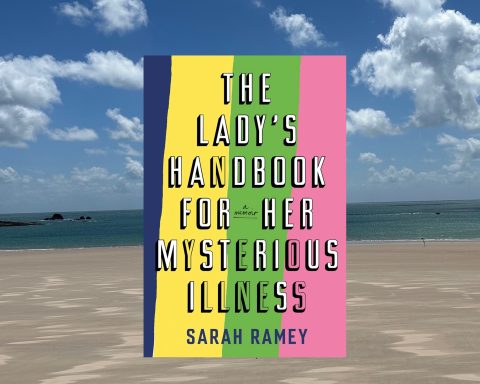
Allow me to set the scene. A group of white-coated (and knuckled) fourth year medical students on a cardiology ward round in a Sydney teaching hospital, circa 1987.
The immaculately suited consultant selects one at random and invites him to auscultate the heart of the elderly patient whose bed they are crowded around, with instructions to tell the group how many heart sounds he can hear.
The student applies his stethoscope to the left chest wall and listens, a look of intense concentration on his face. He stands, composes himself, and states with a confidence that immediately turns out to be misplaced — ‘Eight’. The bemused specialist theatrically replies, ‘Eight!?’ and the student, deadpan, responds ‘Yep, eight. Lub dub. Lub dub. Lub dub. Lub dub’.
I think he ended up doing radiology.
The ability to perform a physical examination appropriate to the patient’s presentation, and correctly elicit physical signs, is a core skill of the competent GP. It has been reported that a well-targeted physical examination can double the diagnostic value of the history alone (which, if you subscribe to the old aphorism that the history will give the diagnosis 80% of the time, makes the combination a pretty potent mix).1 Physical examination can reduce the need for diagnostic testing and enhance the therapeutic relationship. It is a cornerstone of safe and effective practice.
… examination skill deficits are most pronounced in the body systems that medical schools ignore and hospital medicine misses … but which general practice eats for breakfast.
And yet, over recent years a decline in the physical examination skills of doctors has been described.2 Certainly in my neck of the woods, Australian GP training, the physical examination skills of new registrars are often pretty sketchy.
This is perhaps not surprising, considering the years of active deskilling junior doctors undergo re-siting IV cannulas and writing discharge summaries as they roam the public hospital wards in search of a career pathway.
These examination skill deficits are most pronounced in the body systems that medical schools ignore and hospital medicine misses, like dermatology and musculoskeletal medicine, but which general practice eats for breakfast.
Indeed, it has even been suggested that the clinical examination might be dead.3 Has the rise of technology relegated it to the dustbin of history? Why check for a homonymous hemianopia when the MRI machine is just down the corridor? Is telehealth the proverbial ‘final nail’? And in continuing to teach physical examination to our students, are we simply promulgating quackery and peddling myths?
But striking a far more optimistic tone, and trumpeting the Twainism that reports of the death of the physical examination are greatly exaggerated, a recent BJGP article issued a call for general practice to reclaim it as a skill of which to be proud.4 It encouraged further research into the nature of the ‘focused’ general practice physical examination and urged greater priority in GP training.
… let us grassroot GPs unite and champion physical examination as an integral part of our craft … Transilluminate more scrota, ballotte more bellies, and inspect more vomit.
So, while the academics are securing the grant funding, let us grassroot GPs unite and champion physical examination as an integral part of our craft. We could start by rescuing a few forgotten clinical signs and make them our own. How about whispering pectoriloquy? ‘Ninety-nine’ could be our (hushed) rallying cry!
Well it could, but for an inconvenient paper published in 1973, which asserted that ninety-nine is a linguistically inappropriate expression for the diagnosis of lung consolidation.5 The author, William Dock, argued that the English translation of neunundneunzig (apparently brought home by English doctors during sabbaticals on German hospital wards) did not produce the requisite pulmonary vibrations to adequately elicit the sign. He even proposed a jaunty alternative — ‘boogy-woogy’.
Interestingly, I read that the Dutch say ‘Amsterdam’, and it’s ‘baseball’ in the States. In reciprocal parochialism, I’m trying to introduce ‘crikey mate’ for my own respiratory examinations here, but I don’t think it’s catching on.
So, general practice, go forth and examine. Transilluminate more scrota, ballotte more bellies, and inspect more vomit (the value of which ‘cannot be underestimated’, according to my ancient copy of Hamilton Bailey’s).6 Glabella tap anyone with a sniff of slowness, and elicit more Hoffman reflexes. An Allen’s test for all!
William Osler once said, ‘One finger in throat and one in the rectum makes a good diagnostician’. Whether or not he meant simultaneously, let general practice put a collective finger in and take the ‘ex’ out of examinations.
References
1. Paley L, Zornitzki T, Cohen J, et al. Utility of clinical examination in the diagnosis of emergency department patients admitted to the department of medicine of an academic hospital. Arch Intern Med 2011; 171(15): 1394–1396.
2. Oliver CM, Hunter SA, Ikeda T, Galletly DC. Junior doctor skill in the art of physical examination: a retrospective study of the medical admission note over four decades. BMJ Open 2013; 3(4): e002257
3. Patel K. Is clinical examination dead? BMJ 2013; 346: f3442.
4. Block M, Easton G. Time to revive the GP-focused clinical examination. Br J Gen Pract 2017; 67(661): 360.
5. Dock W. Examination of the chest: advantages of conducting and reporting it in English. Bull N Y Acad Med 1973; 49(7): 575–582.
6. Clain E. Hamilton Bailey’s demonstrations of physical signs in clinical surgery. 16th edn. Bristol: John Wright and Sons, 1980.
Featured photo by Luis Melendez on Unsplash








